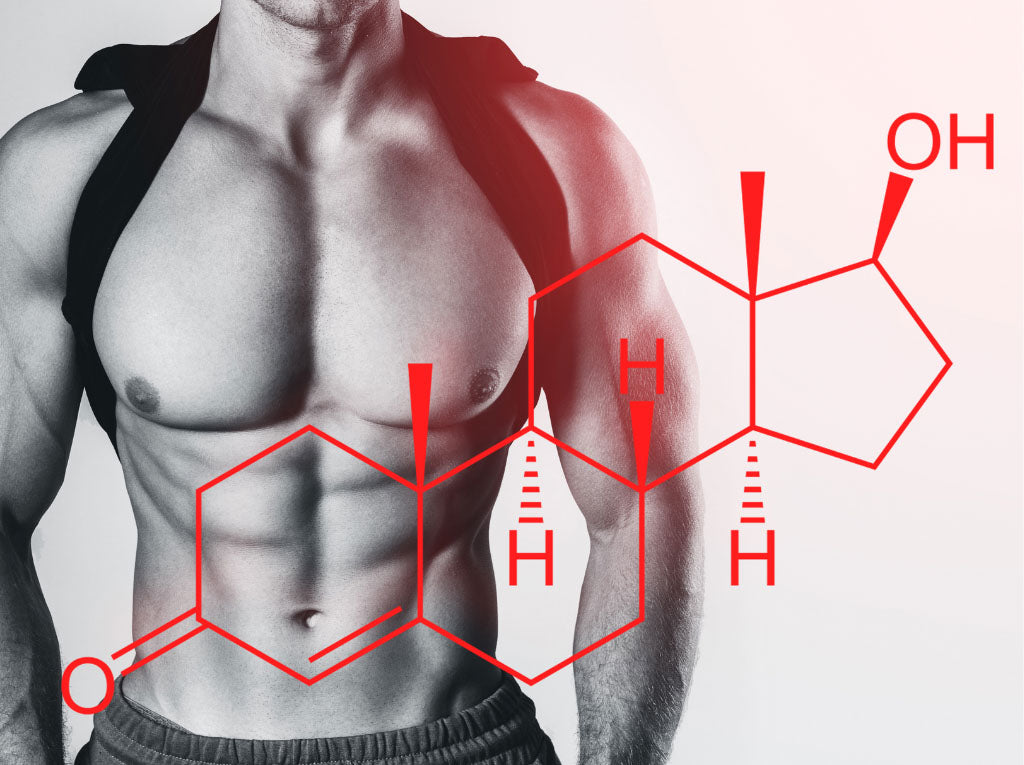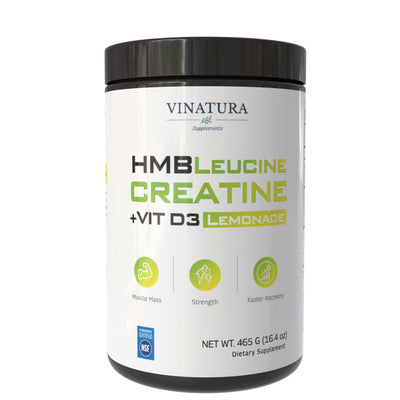
Free Testosterone by Age: What’s Normal?
Free testosterone (FT) is the active form of testosterone that drives energy, muscle, mood, and sexual health.
In men, both total (TT) and free testosterone decline about 1–2% yearly after 30, while women have much lower levels. Tracking FT by age offers a clear view of what’s normal and how hormone balance shifts over time.
Before exploring further, please read the disclaimer located at the end of this webpage.
Key Takeaways
- Total Testosterone drives male traits; low levels can affect energy and overall health [4].
- Free Testosterone makes up only 0.5–4% of total testosterone but directly supports muscle, mood, bone, sexual function, and fertility.
- Free Testosterone provides a more accurate reflection of testosterone’s real impact on the body compared to total testosterone.
- Around 40% of men over 45 have low total testosterone, which is linked to fatigue and reduced libido [1].
- High total testosterone in women may cause hair growth, acne, and voice changes [7].
- Lifestyle habits such as exercise, sleep, and nutrition support healthy testosterone balance [10].
Free vs. Total Testosterone
Free testosterone (FT) and total testosterone (TT) play distinct roles in the body, impacting how this hormone supports health and vitality. Below is a comparison to highlight their unique characteristics.
|
Criteria |
Free Testosterone (FT) |
Total Testosterone (TT) |
|
Definition |
The small portion (0.5–4%) of testosterone in the blood not bound to proteins, ready to act [3]. |
The total amount of testosterone in the blood, including both free and protein-bound forms [4,7]. |
|
Main Functions |
Supports muscle strength, bone health, mood, sexual function, and fertility regulation [8]. |
Includes inactive testosterone bound to proteins (mainly SHBG), which does not directly support these functions [3,7]. |
|
Activity Level |
Directly active, interacting with tissues to drive testosterone’s effects [8]. |
Mostly inactive when bound to proteins, limiting its immediate impact on the body [3,7]. |
Further Explanation
Free Testosterone, though small in percentage, is the biologically active form that binds directly to tissues. Total Testosterone includes both free and protein-bound forms, reflecting the overall hormone level but not always its immediate biological activity.
Free Testosterone Chart by Age
Tracking free testosterone (FT) levels through charts helps simplify understanding how this hormone changes with age and differs between men and women. The sections below break down these trends for males and females, connecting to the broader discussion of testosterone’s role in health.
Free Testosterone Chart in Males

Puberty to Early Adulthood (12–30 years): Free testosterone peaks, fueling muscle development, bone growth, and sexual maturation. Levels vary widely but reach their highest point during late adolescence and early 20s [5].
Adulthood (30–70 years): Free testosterone begins a steady decline of about 2% per year, outpacing testosterone decline. Rising SHBG levels bind more testosterone, reducing free availability. This contributes to gradual shifts in energy, strength, and sexual vitality [1,2,4].
Over 70 years: Free testosterone levels drop significantly. Studies suggest that up to 30% of men over 70 and 50% of men over 80 may have low testosterone when assessed by free testosterone [1,2].
Free Testosterone Chart in Females

Pre-Puberty & Adolescence: Free testosterone is very low before puberty and rises modestly during adolescence. Measurement is challenging due to low concentrations [7].
Reproductive Years (18–50): Typical free testosterone ranges are 0.2–6.3 pg/ml (0.7–21.9 pM) [7]. These levels play roles in energy, bone density, and mood, though precise reference ranges remain debated [6].
Menopause & Beyond (50+): Free testosterone may increase slightly post-menopause due to adrenal activity but typically declines again after 70, averaging 0.1–3.7 pg/ml [7].
Testosterone Levels by Age Chart
Testosterone levels shift across life stages, reflecting the body’s changing needs. The table below outlines how total (TT) and free testosterone (FT) vary in men and women, providing context for average levels by age [1,2,7,8].
|
Age Group |
Testosterone Levels |
|
Newborn & Pre-Puberty |
Very low: Testosterone <8 ng/dL (<0.28 nM), free testosterone 0.2–5.0 pg/ml (0.7–17.4 pM) in females [7]. |
|
Puberty |
Rising levels: Testosterone and free testosterone increase gradually in females; males see a sharp rise in testosterone, shaping physical and behavioral traits [5,7]. |
|
Adulthood (18–50 years) |
Males: Testosterone 300–1,000 ng/dL, much higher than females (7–8 times) [8]. |
|
Elderly (50+ years) |
Males: Testosterone declines ~3.2 ng/dL/year; free testosterone drops faster due to rising SHBG. Females: Free testosterone 0.1–3.7 pg/ml (0.3–12.8 pM) by age 70+ [1,2]. |

These trends, observed in human studies, highlight testosterone’s dynamic role across life stages [1]. The next section will dive deeper into average total testosterone levels by specific age groups for a clearer view of these changes.
Average Total Testosterone Levels by Age
Total testosterone (TT) shifts throughout life, mirroring the body’s needs from infancy to old age. While free testosterone shows what’s immediately active, total testosterone reflects the body’s broader hormonal capacity.
Looking at total testosterone by age reveals how it sustains growth, vitality, and overall health at each stage [1,2,7].
Newborn and Childhood Phase
In early life, total testosterone (TT) levels are minimal, especially in girls. For females under 8 years or in the earliest puberty stage (Tanner stage 1), total testosterone is typically below 8 ng/dL (<0.28 nM) [7].
Boys also have low levels during this phase, though specific data is less detailed. Measuring these low levels is challenging with standard tests, but newer techniques like liquid chromatography-mass spectrometry (LC/MSMS) offer more accuracy [7].
Although based on human studies, these measurements still lack precision for very low levels, limiting understanding of early hormonal health [7].
Teenage Years and Early Adulthood
During puberty, total testosterone levels surge, especially in boys, reaching a peak in early adulthood. In males, total testosterone ranges from 300–1,000 ng/dL in the morning, supporting muscle growth, bone strength, and social behaviors [4].
Animal studies suggest testosterone shapes brain circuits during puberty, influencing behaviors into adulthood, though human applications need further exploration [5].
In females, testosterone rises slightly through puberty but remains much lower than in males—about 7–8 times lower in blood levels and 20 times lower in daily production [7,8].
These findings from human studies show testosterone’s critical role in youth, with potential to shape lifelong health [4]. This peak sets a baseline for the declines seen later.
Adult Age
In adulthood, testosterone levels stabilize but begin to wane after age 30, particularly in men. For men, testosterone drops by about 100 ng/dL per decade, or roughly 1–2% per year [4].
A study of 890 healthy men by Harman et al. (2001) found a steady testosterone decline of about 3.2 ng/dL per year, consistent across factors like weight or lifestyle [1]. In women, testosterone remains low but supports energy and mood, though specific adult ranges are less documented [7].
These human studies highlight testosterone’s role in maintaining vitality, with potential for further insights into how declines affect health [1]. This gradual decrease signals the transition to later life changes.
Elderly Age
With aging, testosterone levels fall more noticeably, especially in men. This decline often coincides with reduced energy, muscle mass, and physical performance.
- About 40% of men over 45 and 50% of men over 80 have TT below 300 ng/dL, a threshold often associated with low testosterone [4].
- Harman et al. (2001) reported that around 20% of men over 60, 30% of men over 70, and 50% of men over 80 fall into this category, with rates even higher when FT is considered [1].
- In women over 70, TT remains low and similar to earlier adult levels [2].
- The Health in Men Study (2007) further noted that while TT may appear stable in older men, rising SHBG levels reduce the fraction of testosterone that is biologically available [2].
Table: Symptoms of Abnormal Testosterone Levels
Building on the earlier exploration of how testosterone levels shift across ages, this section highlights what happens when testosterone levels are too low in men or too high in women.
Abnormal testosterone levels can lead to a range of physical, emotional, and sexual changes, which differ significantly between sexes.
|
Category |
Males (Low Testosterone) |
Females (High Testosterone) |
|
Sexual & Reproductive |
Reduced libido, erectile difficulties, fewer spontaneous erections, delayed sexual development, smaller testes, reduced fertility, breast tissue growth, and less body hair [9,10]. |
Excessive hair growth (hirsutism), acne, hair loss, deeper voice [7]. |
|
Mood & Cognitive |
Low mood, irritability, fatigue, lack of motivation, trouble focusing, poor memory, sleep issues, general unease [4,8,10]. |
Limited data; may contribute to mood changes, but specific symptoms are less clear [6]. |
|
Physical & Metabolic |
Mild anemia, weaker bones, reduced muscle strength, increased body fat, lower physical performance, hot flashes, vision changes, loss of smell [1,4]. |
Increased muscle growth, potential ovarian changes in older women due to higher LH levels [7]. |
Although these symptoms are observed in humans, data on women’s symptoms is less detailed, indicating potential for further research to clarify effects [6]. Recognizing these signs helps connect testosterone’s role to practical steps for managing its levels, discussed next.
How to Manage Testosterone
Testosterone levels may be supported through healthy lifestyle habits, and in some cases, medical options prescribed by a healthcare professional, combined with regular monitoring [1,10].
Lifestyle Changes
- Weight & Exercise: A Healthy weight and regular strength/cardio training boost TT and fertility [1,4].
- Nutrition & Sleep: Balanced diet, good sleep, and avoiding smoking/alcohol support hormone health [1,10].
- Reduce Toxins: Limit exposure to smoke, pesticides, and heavy metals that disrupt testosterone [4].

Medical Options
- TRT (Testosterone Replacement Therapy): May be prescribed by healthcare professionals to help restore TT toward a target range (often ~450–600 ng/dL). It may influence muscle, bone, or mood, but requires medical monitoring due to potential side effects [9,10].
- Fertility-Safe Alternatives: hCG, clomiphene, or anastrozole can stimulate natural testosterone, used off-label [4].
Regular Monitoring
- Initial Tests: Measure TT twice in the morning (7–11 AM); <300 ng/dL suggests evaluation [10].
- Follow-ups: On TRT, check levels 2–4 weeks after start, then every 6–12 months; track RBCs and PSA (age >40) [10].
- Symptom Check: Diagnosis relies on both low TT and symptoms (e.g., fatigue, low libido) [10].
By combining healthy habits, appropriate medical care, and consistent monitoring, testosterone can be managed safely and effectively.
Practical Tips for Readers
- Focus on three simple habits: exercise, consistent sleep, and balanced nutrition.
- If you notice persistent fatigue, mood shifts, or low libido, speak with a healthcare provider.
- Remember: Normal ranges differ between men and women and change with age.
Frequently Asked Questions
1. At What Age Should You Stop Taking Testosterone?
No specific age is set; stopping depends on health needs and doctor advice [10]. Always consult a professional to assess risks and benefits.
2. What Age Does Testosterone Peak?
In men, during puberty and early adulthood (teens to 20s) [4], testosterone levels peak, supporting growth and vitality.
3. Do Testosterone Levels Change With Age?
Yes, testosterone declines 1–2% yearly in men after 30; women have lower levels that also decrease with age [4,7]. Changes impact energy and health.
Conclusion
Testosterone shapes health across life stages, varying by age and sex. Understanding its trends empowers better choices for vitality. Curious about your levels? Consult a healthcare provider to explore your hormonal health and take charge of your well-being.
Testimonial Disclaimer
*The testimonials presented on this website are provided by individuals based on their personal experiences with our products. These testimonials represent individual opinions and experiences, which may not be typical or applicable to all users of our products. Results may vary depending on a variety of factors, including individual health, lifestyle, and adherence to product usage instructions.References
- [1] Harman, S. Mitchell, et al. “Longitudinal Effects of Aging on Serum Total and Free Testosterone Levels in Healthy Men.” The Journal of Clinical Endocrinology & Metabolism, vol. 86, no. 2, Feb. 2001, pp. 724–731, https://doi.org/10.1210/jcem.86.2.7219.
- [2] Yeap, Bu B, et al. “In Men Older than 70 Years, Total Testosterone Remains Stable While Free Testosterone Declines with Age. The Health in Men Study.” European Journal of Endocrinology, vol. 156, no. 5, May 2007, pp. 585–594, https://doi.org/10.1530/eje-06-0714. Accessed 25 Jan. 2022.
- [3] Yang, Qingtao, et al. “Association of Total Testosterone, Free Testosterone, Bioavailable Testosterone, Sex Hormone–Binding Globulin, and Hypertension.” Medicine, vol. 98, no. 20, May 2019, p. e15628, https://doi.org/10.1097/md.0000000000015628. Accessed 6 Oct. 2020.
- [4] Cohen, Jordan, et al. “Low Testosterone in Adolescents & Young Adults.” Frontiers in Endocrinology, vol. 10, 10 Jan. 2020, https://doi.org/10.3389/fendo.2019.00916.
- [5] Schulz, Kalynn M., et al. “Testosterone Programs Adult Social Behavior before and During, but Not After, Adolescence.” Endocrinology, vol. 150, no. 8, 7 May 2009, pp. 3690–3698, https://doi.org/10.1210/en.2008-1708. Accessed 28 Feb. 2022.
- [6] Davis, Susan, and Jane Tran. “What Are “Normal” Testosterone Levels for Women?” The Journal of Clinical Endocrinology & Metabolism, vol. 86, no. 4, Mar. 2001, pp. 1842–1843, https://doi.org/10.1210/jcem.86.4.7436-10. Accessed 29 Mar. 2020.
- [7] Demers, Laurence M. “Androgen Deficiency in Women; Role of Accurate Testosterone Measurements.” Maturitas, vol. 67, no. 1, Sept. 2010, pp. 39–45, https://doi.org/10.1016/j.maturitas.2010.04.019. Accessed 20 Aug. 2020.
- [8] Johnson, Justin M., et al. “The Effect of Testosterone Levels on Mood in Men: A Review.” Psychosomatics, vol. 54, no. 6, Nov. 2013, pp. 509–514, https://doi.org/10.1016/j.psym.2013.06.018.
- [9] Al-Sharefi, Ahmed, et al. “How to Manage Low Testosterone Level in Men: A Guide for Primary Care.” British Journal of General Practice, vol. 70, no. 696, 1 July 2020, pp. 364–365, bjgp.org/content/70/696/364, https://doi.org/10.3399/bjgp20X710729. Accessed 30 Nov. 2020.
- [10] Mulhall, John P., et al. “Evaluation and Management of Testosterone Deficiency: AUA Guideline.” Journal of Urology, vol. 200, no. 2, Aug. 2018, pp. 423–432, https://doi.org/10.1016/j.juro.2018.03.115.
Author

Product Disclaimer
Including an ingredient or study does not evaluate, endorse, or recommend any Vinatura product or any third-party product. Some ingredients discussed may not be used in any Vinatura product.
The content of the articles has not been evaluated by the Food and Drug Administration (FDA) and is not intended to promote or endorse any specific product. Any products sold on this website are not intended to diagnose, treat, cure, or prevent any disease.
Opinions and Endorsements
Any claims, statements, or opinions expressed in the articles are those of the author(s) and do not necessarily reflect the views or opinions of the manufacturers of the dietary supplement products. The products sold on this website are separate from the content of the articles and are not directly endorsed or associated with the information presented here.
Liability Disclaimer
The author(s) of the articles, website, and manufacturers of the dietary supplement products do not assume any liability for any potential consequences arising from the use of the information provided in the articles. Ingredient effects, dosages, and safety vary by individual, formulation, and context; some ingredients interact with medications or may be unsuitable during pregnancy or lactation. It is recommended that individuals consult with a qualified healthcare professional before making any dietary or lifestyle changes, including the use of dietary supplements.
Product Usage
Please refer to the product labels and packaging for specific usage instructions and guidelines for the dietary supplement products sold on this website.
Customer Support
For any concerns or questions regarding the dietary supplement products, please contact our customer support team, who will be more than happy to assist you.





Leave a Comment
Be the first to comment.
What do you think?